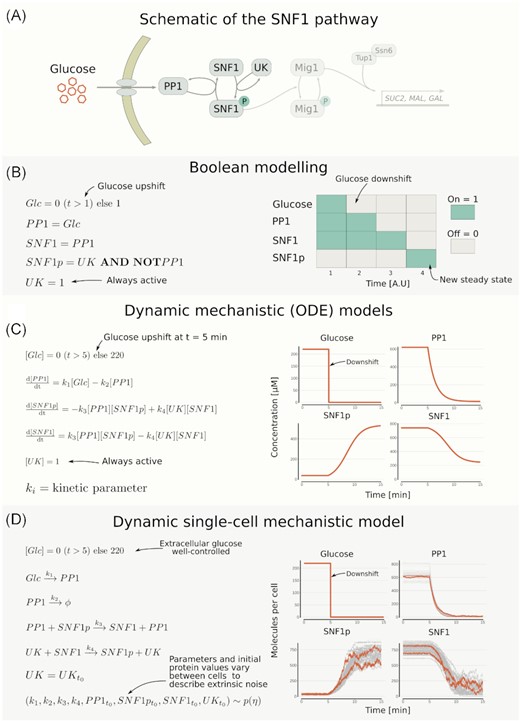In memory of our dear friend and colleague Stefan Hohmann, FEMS YEast organized a special Issue to which we contributed with the review on state-of-the-art modelling approaches to glucose signalling. Stefan was one of the pioneers empolying the systems biology approaches to understand better signalling, and this review summarizes some of his earlier work as well as current models and methods.
Saccharomyces cerevisiae has a sophisticated signalling system that plays a crucial role in cellular adaptation to changing environments. The SNF1 pathway regulates energy homeostasis upon glucose derepression; hence, it plays an important role in various processes, such as metabolism, cell cycle and autophagy. To unravel its behaviour, SNF1 signalling has been extensively studied. However, the pathway components are strongly interconnected and inconstant; therefore, elucidating its dynamic behaviour based on experimental data only is challenging. To tackle this complexity, systems biology approaches have been successfully employed. This review summarizes the progress, advantages and disadvantages of the available mathematical modelling frameworks covering Boolean, dynamic kinetic, single-cell models, which have been used to study processes and phenomena ranging from crosstalks to sources of cell-to-cell variability in the context of SNF1 signalling. Based on the lessons from existing models, we further discuss how to develop a consensus dynamic mechanistic model of the entire SNF1 pathway that can provide novel insights into the dynamics of nutrient signalling.
Link: review

